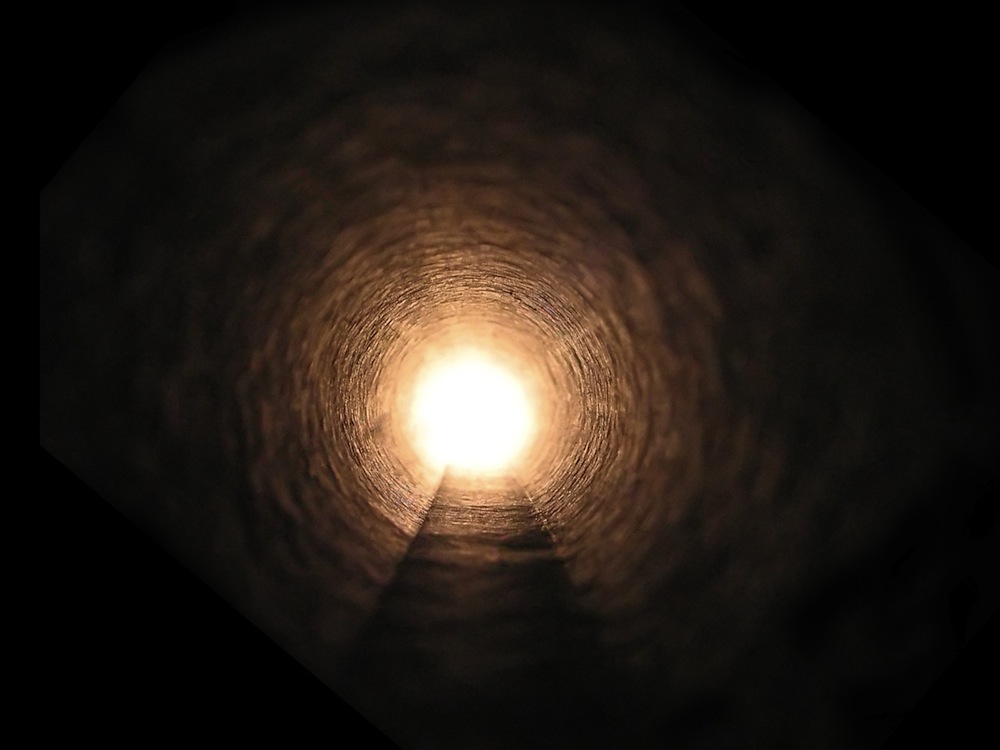Near-Death Experiences Explained by Science

Near-death experiences are often thought of as mystical phenomena, but research is now revealing scientific explanations for virtually all of their common features. The details of what happens in near-death experiences are now known widely—a sense of being dead, a feeling that one's "soul" has left the body, a voyage toward a bright light, and a departure to another reality where love and bliss are all-encompassing.
Approximately 3 percent of the U.S. population says they have had a near-death experience, according to a Gallup poll. Near-death experiences are reported across cultures, with written records of them dating back to ancient Greece. Not all of these experiences actually coincide with brushes with death—one study of 58 patients who recounted near-death experiences found 30 were not actually in danger of dying, although most of them thought they were.
Recently, a host of studies has revealed potential underpinnings for all the elements of such experiences. "Many of the phenomena associated with near-death experiences can be biologically explained," says neuroscientist Dean Mobbs, at the University of Cambridge's Medical Research Council Cognition and Brain Sciences Unit. Mobbs and Caroline Watt at the University of Edinburgh detailed this research online August 17 in Trends in Cognitive Sciences.
For instance, the feeling of being dead is not limited to near-death experiences—patients with Cotard or "walking corpse" syndrome hold the delusional belief that they are deceased. This disorder has occurred following trauma, such as during advanced stages of typhoid and multiple sclerosis, and has been linked with brain regions such as the parietal cortex and the prefrontal cortex—"the parietal cortex is typically involved in attentional processes, and the prefrontal cortex is involved in delusions observed in psychiatric conditions such as schizophrenia," Mobbs explains. Although the mechanism behind the syndrome remains unknown, one possible explanation is that patients are trying to make sense of the strange experiences they are having.
Out-of-body experiences are also now known to be common during interrupted sleep patterns that immediately precede sleeping or waking. For instance, sleep paralysis, or the experience of feeling paralyzed while still aware of the outside world, is reported in up to 40 percent of all people and is linked with vivid dreamlike hallucinations that can result in the sensation of floating above one's body. A 2005 study found that out-of-body experiences can be artificially triggered by stimulating the right temporoparietal junction in the brain, suggesting that confusion regarding sensory information can radically alter how one experiences one's body.
A variety of explanations might also account for reports by those dying of meeting the deceased. Parkinson's disease patients, for example, have reported visions of ghosts, even monsters. The explanation? Parkinson's involves abnormal functioning of dopamine, a neurotransmitter that can evoke hallucinations. And when it comes to the common experience of reliving moments from one's life, one culprit might be the locus coeruleus, a midbrain region that releases noradrenaline, a stress hormone one would expect to be released in high levels during trauma. The locus coeruleus is highly connected with brain regions that mediate emotion and memory, such as the amygdala and hypothalamus.
In addition, research now shows that a number of medicinal and recreational drugs can mirror the euphoria often felt in near-death experiences, such as the anesthetic ketamine, which can also trigger out-of-body experiences and hallucinations. Ketamine affects the brain's opioid system, which can naturally become active even without drugs when animals are under attack, suggesting trauma might set off this aspect of near-death experiences, Mobbs explains.
Sign up for the Live Science daily newsletter now
Get the world’s most fascinating discoveries delivered straight to your inbox.
Finally, one of the most famous aspects of near-death hallucinations is moving through a tunnel toward a bright light. Although the specific causes of this part of near-death experiences remain unclear, tunnel vision can occur when blood and oxygen flow is depleted to the eye, as can happen with the extreme fear and oxygen loss that are both common to dying.
Altogether, scientific evidence suggests that all features of the near-death experience have some basis in normal brain function gone awry. Moreover, the very knowledge of the lore regarding near-death episodes might play a crucial role in experiencing them—a self-fulfilling prophecy. Such findings "provide scientific evidence for something that has always been in the realm of paranormality," Mobbs says. "I personally believe that understanding the process of dying can help us come to terms with this inevitable part of life."
One potential obstacle to further research on near-death experiences will be analyzing them experimentally, says cognitive neuroscientist Olaf Blanke at the Swiss Federal Institute of Technology in Lausanne in Switzerland, who has investigated out-of-body experiences. Still, "our work has shown that this can be done for out-of-body experiences, so why not for near-death-experience-associated sensations?"
This article was first published at Scientific American. © 2011 Scientific American. All rights reserved.
Follow Scientific American on Twitter @SciAm and @SciamBlogs. Visit ScientificAmerican.com for the latest in science, health and technology news.











